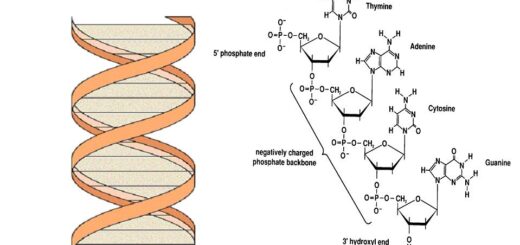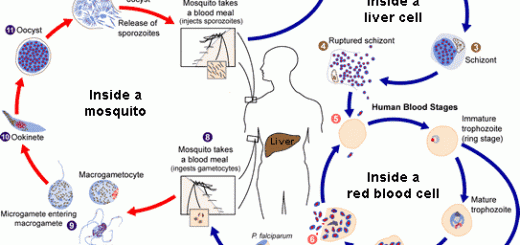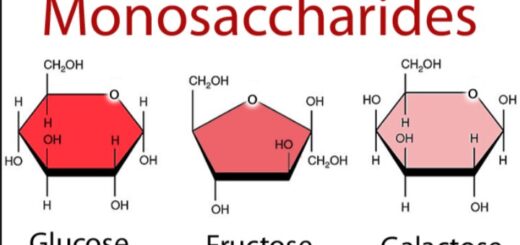Productive organs, Germ cells, Fertilization, Stages of cleavage, Implantation and Decidua
Human development starts at fertilization. Fertilization is the process by which the spermatozoon (a male gamete) and the oocyte (a female gamete) unites to give a single cell, the zygote. The spermatozoon develops in the testis and the ovum develops in the ovary.
Fertilization
Fertilization is the process by which mature sperm from the male and mature ovum of the female meet and fuse forming the zygote. Site: At the ampullary part of the uterine tube. because it is close to the ovary, and it is the widest part of the uterine tube.
The shape of mature sperm
Sperm is a freely, actively motile cell consisting of a head, neck, body, and tail. Its head has an acrosome covered with a plasma membrane. The head contains the nucleus which has 22 chromosomes + Y or X chromosomes.
Morphology of mature ovum
Ovum is a large oval cell, it’s a nucleus containing 23 chromosomes (+22X). It has two membranes; the inner thin one is the vitelline membrane and the outer one is the zone pellucida (acellular glycoprotein material). The corona radiata is two or three layers of cells surrounding the zona pellucida.
How the sperms reach the site of fertilization?
- By the movement of its tail.
- By the movement of uterine cilia.
- By chemoattraction.
How the mature ovum reaches the sites of fertilization?
- Capture the fimbria of the uterine tube.
- By muscular contraction of uterine tube (peristalsis).
Before the sperm fertilize the oocyte, the mature sperms undergo two processes:
- Capacitation is the process by means of which the glycoprotein coat is removed from the plasma membrane covers the head of the sperm. Only the capacitated sperm can penetrate the corona radiate.
- Acrosome reaction occurs after capacitation. The sperm acrosome releases proteolytic enzymes as acrosine, and hyaluronidase, in order to penetrate the zone pellucida.
Results of fertilization
- Restoration of the diploid number of chromosomes (46).
- Determination of the chromosomal sex of the embryo, where fertilization of the ovum (22+X) with an X-bearing sperm (22+X) produces a female embryo (44, XX) while fertilization of the ovum with a Y-bearing sperm (22+Y) produces a male embryo (44+XY).
- Initiation of cleavage.
Phase 1: Sperms break through the corona radiate barrier.
Phase 2: sperms penetrate the zone pellucida.
Phase 3: One sperm penetrates the oocyte membrane and loses its own plasma membrane.
Cleavage
It is the fragmentation of the zygote by repeated mitotic divisions, resulting in a rapid increase in the number of cells. The resulting daughter cells are smaller than the parent cells. The resulting cells are called blastomeres. Site: The uterine tube medial to the ampula of the uterine tube.
Stages of cleavage
a. Morula stage:
- About 30 hours after fertilization, the zygote divides into 2 cells (blastomeres), then into 4 blastomeres at 40 hours.
- Twelve cell stage is reached after 3 days of fertilization, while the 16 cell stage is reached at the 4th day (96 hours).
- The developing embryo of 12-16 blastomeres is called morula (like a mulberry tree) that enters the uterus nearly 3 days after fertilization.
b. Blastocyst formation:
- As the morula enters the uterus, fluid from the uterine cavity penetrates through the zona pellucida and coalesces to form a single cavity (the blastocele) and the embryo is called a blastocyst.
- The blastocele divides the blastomeres into inner cell mass which will form the embryo proper. The surrounding cells of the periphery form the outer cell mass which will form the trophoblast that will form the fetal part of the placenta (trophe = nutrition).
- The cells of the inner cell mass are now called the embryoblast and are located at one pole of the blastocyst.
- The zona pellucida disappears immediately before implantation.
Clinical application:
The embryonic stem cells (ES cells) are derived from the inner cell mass. These cells can give rise to any type of tissues of the embryo except the trophoblast, so they are called pluripotent cells.
Implantation
It means penetration of the blastocyst into the superficial (compact) layer of the uterine endometrium.
Mechanism of implantation
While floating freely in the uterus, the embryo gets nourishment from secretions of the uterine glands. The zone pellucida disappears to allow implantation. About 6 days after fertilization, the blastocyst at the inner cell mass side (embryonic pole) attaches to the endometrium. The trophoblast proliferates rapidly and becomes differentiated into two layers:
- An inner cellular layer of cytotrophoblast.
- An outer multinucleated protoplasmic mass with no cell membrane called syncytiotrophoblast.
The syncytiotrophoblast forms finger-like processes that extend into the endometrium of the uterus, by the end of the first week, the blastocyst is superficially implanted in the compact layer of the endometrium.
The syncytiotrophoblast at the embryonic pole expands quickly, It can produce enzymes that erode the uterine maternal tissues, so enabling the blastocyst to burrow into the endometrium. This implanted blastocyst gets its nourishment from the eroded maternal uterine tissues.
Seven days after fertilization, a layer of cells; the hypoblast appears on the surface of the inner cell mass facing the blastocele. After the blastocyst is completely implanted, the penetration defect in the endometrium is closed by a fibrin clot, then the repair of the surface epithelium takes place. After complete blastocyst implantation, the endometrium is called “decidua”.
The normal site of implantation is the endometrium of the posterior or anterior wall of the fundus of the uterus in or near the middle line. Time of implantation: Implantation occurs at the 6th day after fertilization and is completed about the 11th day.
The function of zona pellucida
- Allows penetration of the ovum by single sperm and prevents others by changing its chemical nature after the entrance of the first sperm.
- Prevents adhesion of the developing blastomeres to uterine tube mucosa.
Abnormal implantation (Ectopic pregnancy):
It is the implantation of the blastocyst in any place other than the normal site mentioned above. It is also called an ectopic pregnancy. It might result in the death of the embryo or early abortion (loss of embryo) with severe internal hemorrhage.
Abnormal sites of implantation
1.Uterine ectopic pregnancy:
- At the cornu of the uterus (the site of attachment of the uterine tube) leading to early abortion.
- At the lower uterine segment or cervix leading to placenta previa.
2. Extra uterine ectopic pregnancy:
- The commonest site is in the Fallopian tube leading to tubal pregnancy that leads to early abortion or tubal rupture with severe internal hemorrhage.
- Ovary (ovarian pregnancy).
- Peritoneum of Douglas pouch (abdominal pregnancy), broad ligament of the uterus or omentum of the stomach (rare).
Placenta previa
Placenta previa means implantation of the blastocyst in the lower segment of the uterus close to the internal os of the cervix. Thus the placenta will precede the fetus at delivery (normally, the fetus delivered first, followed by the placenta. Previa = before the fetus. The internal os of the cervical canal. During labour, the placenta is shifted upwards away from the internal os and becomes as placenta previa lateralis.
Complications of placenta previa: Severe antepartum hemorrhage (bleeding before birth).
The decidua
Decidua is the compact layer of the endometrium after implantation of the blastocyst.
Types of the decidua
- Decidua basalis is the part of the endometrium lying at the base of the implanted blastocyst, between it and the myometrium of the uterus. It will form the maternal origin of the placenta.
- Decidua capsularis is the part of the endometrium covering the surface of the implanted blastocyst, it lies between the blastocyst and the uterine cavity.
- Decidua parietalis is the part of the endometrium lining the rest of the uterine cavity.
- Decidua marginalis is the part of the endometrium lying at the junction between decidua capsularis and parietalis (It lies at the margins of the implanted blastocyst).
The last three types of decidua will ultimately fuse and degenerate with the advance of pregnancy due to the growth of the fetus.
Second & third week of Embryonic development, Chorion & types of Chorionic villi
Third to eight weeks (Embryonic period), Embryo Folding & Results of folding
Fetal membrane layers, Chorion, Amnion, Yolk sac & umbilical cord
Placenta types, structure, function, development & abnormalities
Reproduction in Humans, Structure of Male & Female reproductive (genital) system













